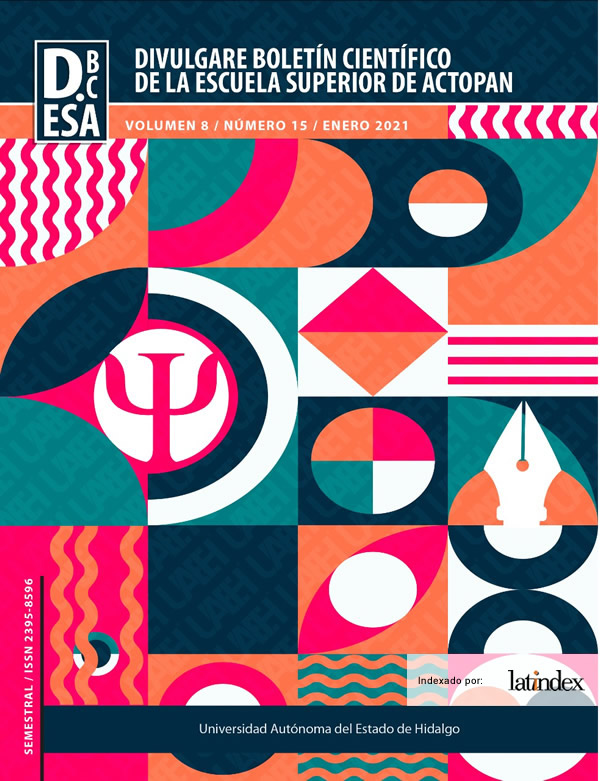Become SNI. Gender Issue?
DOI:
https://doi.org/10.29057/esa.v8i15.6343Keywords:
higher education, gender, researchers, science, MexicoAbstract
The academy and science start from a hegemonic system in which the evaluation and accreditation criteria for women and men apply to the regulations. Therefore, in these spaces of education and areas of knowledge, the indicators remain gender-neutral, they are invisible to women in science. Educational and scientific innovation can not ignore the development of women in academic spaces so it is necessary to look at their development from a non-sexist perspective that favors inclusion in the still "masculinized" spaces. Educational innovation should not only be based on the formation of a "human capital" but on people who are contributing knowledge and who face inequalities in the educational fields. Becoming an investigator has challenges to create new scientific knowledge that take as basic elements the reconciliation of family and work life for many researchers cover double triple working days to be able to investigate and publish under conditions of equity.
Downloads
References
Álvarez, G. y González, M. (1998). Las políticas de educación superior y el cambio institucional. Sociológica, 13(36) 55-87. Recuperado de http://www.redalyc.org/articulo.oa?id=305026472003
Blázquez, N. y Flores, J. (Eds.) (2005) Ciencia, Tecnología y Género en Iberoamérica. CEIICH, UNAM, UNIFEM y Plaza y Valdés, México.
Blázquez, N. (2014). Evaluación académica: sesgos de género. UNAM-CEIICH: México.
Bourdieu, P. y Passeron, J. (2009) Los herederos: los estudiantes y la cultura. México: Siglo XXI.
Bourdieu. P. (2008) Capital cultural, escuela y espacio social. Siglo XXI: México
------------ (2000) La dominación masculina. Barcelona: Anagrama
------------- (2009) Homo academicus. México: Siglo XXI
Burin, M. y Meler I. (2000) Varones, género y subjetividad masculina. Argentina: Paidós
Cabrero, E. (2015) Principales logros y desafíos del Sistema Nacional de Investigadores de México a 30 años de su creación. Revista CTS, enero de 2015, número 28, Vol. 1
Consejo Nacional de Ciencia y Tecnología (2015). Sistema nacional de investigadores. 02 de septiembre 2019, de CONACYT Recuperado de http://www.conacyt.mx/index.php/el-conacyt/sistema-nacional-de-investigadores
Delors, J. (1997) “La educación encierra un tesoro”. UNESCO: Francia.
Didou, S. y Gérard, E (2010) El sistema nacional de investigadores. Veinticinco años después. México: ANUIES.
Giroux. H. (2004) Teoría y resistencia en educación. México: Siglo XII
Gutiérrez, S. y Duarte, M. (2012). Ingenieras o ingenieros: cómo se conciben las mujeres en el campo de ingeniería. En Memorias, IX Congreso
Iberoamericano de Ciencia, Tecnología y Género. Sevilla, España.
Haraway, D. (1995): Ciencia, cyborgs y mujeres. La reinvención de la naturaleza, Madrid, Cátedra.
Palomar, C. (2005). La política de género en la educación superior. La ventana. Revista de estudios de género, 3(21), 7-43. Recuperado en 04 de septiembre de 2020, de http://www.scielo.org.mx/scielo.php?script=sci_arttext&pid=S1405-94362005000100007&lng=es&tlng=es.
Programa de Naciones Unidas para el Desarrollo (PNUD) (2010) “Legislación sobre igualdad de género y no violencia contra las mujeres: Recomendaciones para su implementación en el sector educativo. México
Rivera, E. (2010). De la manifestación al aula. Saberes, silencios e inequidades en la Universidad Autónoma de Puebla (1972-2001). Tesis de Doctorado en Historia. México: Universidad Veracruzana-Instituto de Investigaciones Histórico-Sociales
Rogel, R. (2014, 13 de marzo) Mujeres científicas enfrentan desigualdad, afirma investigadora de la UAEM. Obtenido el 10 de enero. Disponible en: http://www.sinembargo.mx/13-03-2014/930891
Wainermar, C. (2011) Consejos y advertencias para la formación. En Wainerman, C. Y Sautu, R. (comp.) La trastienda de la investigación. Buenos Aires: Manantial.


















